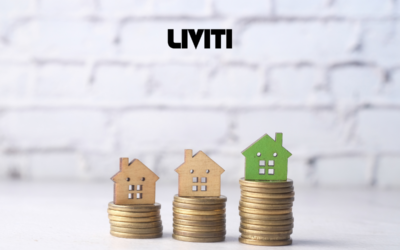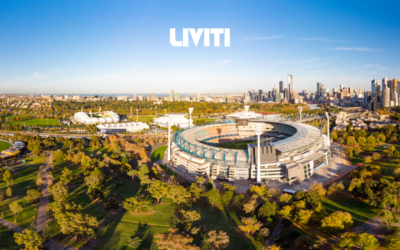Plans for the world’s tallest timber building
Introducing C6…
YES, this building will be named after the periodic table’s symbol for carbon. Melbourne developer, James Dibble, has submitted plans for the world’s TALLEST hybrid timber tower. If approved, this mass timber construction will be Australia’s SECOND carbon-negative building after Sydney’s Atlassian tower, standing 3 metres taller at 183m. The $350 million apartment block will be located in the city of South Perth, close to the Perth Zoo.
The proposal for C6 currently includes provisions for 245 apartments ranging from 1 to 4 bedrooms, over 48 levels. The best thing – the ROOFTOP! Gardens, outdoor dining, entertainment spaces, and communal amenities… C6 is ticking all the boxes for sure!

(Source: The Fifth Estate) CGI of C6, the world’s tallest timber tower
Hybrid timber tower
You might think that a structure made of timber would go up in flames… But thankfully, C6 is a ‘hybrid’ design. If you have never heard of a hybrid design, it refers to using different materials to create innovative structures. The hybrid nature of C6 creates a unique challenge for structural engineers and architects.
The mass timber construction requires a mixture of materials and an intricate engineering and design process that principal architect, Reade Dixon states, “has never been done before”.
The hybrid timber tower will include a MASS amount of timber – approximately 7400 cubic metres of timber. That’s about 3 TIMES as big as an Olympic Swimming Pool! The timber will make up almost half of the tower’s total structure, with a mixture of cross-laminated timber, glue-laminated timber, steel, concrete and other building materials.
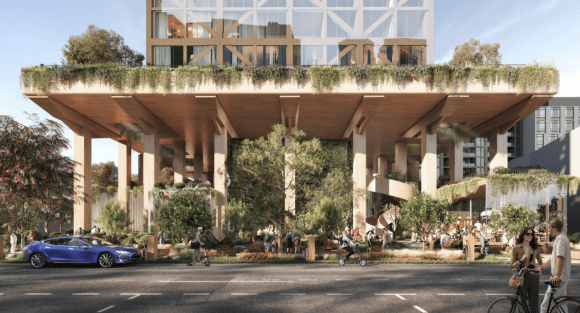
(Source: The Fifth Estate) CGI street view image of C6
A Carbon negative building
The built environment is one of the 3 major drivers of climate change, and it doesn’t help that the building materials that the property industry relies on are steel and concrete – the most energy-dense materials to produce.
The good news is that the south Perth timber tower will be Australia’s SECOND carbon-negative building after the Atlassian tower in Sydney! It will feature an embedded power network, with wind and solar panels to create renewable on-site energy production.
C6 will also have 3500 square metres of floral, edible and native gardens – which will deliver tangible health benefits to residents. Rooftop gardens and urban greenery are incredible for our environment, as they create ‘shields’ for buildings, insulating the structure and absorbing pollutants. How amazing!
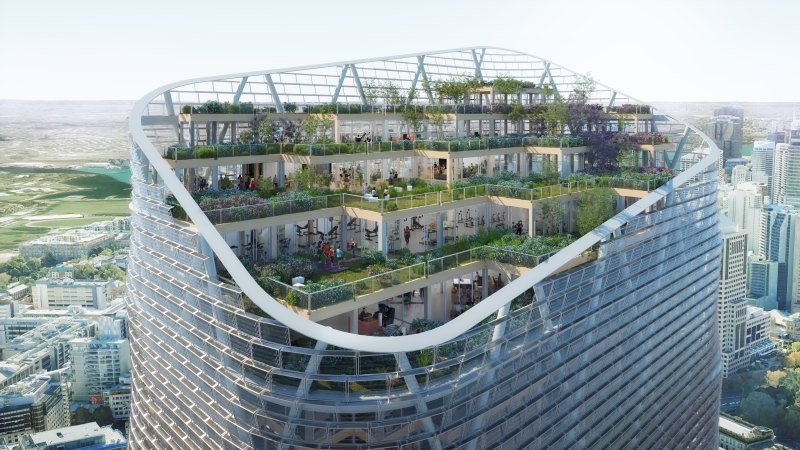
(Source: SMH) Image of the Atlassian tower in Sydney
James Dibble, Grange Development founder and director, stated that if successful, the timber tower will set a new precedent for renewable building developments around the world.
“If we can accelerate a paradigm shift into the use of more renewable building materials such as mass timber in a hybrid nature and see even 10, 15 or 20 per cent of future projects use mass timber in their construction in the next few years, we will have succeeded,” said Dibble.
C6 aims to encourage developers around the world to ditch energy-dense building materials and go green with renewable resources. It is a relief to know that buildings constructed from engineered timber have a significantly lower carbon footprint than other structures, both during construction and operation.
(Source: The Fifth Estate) Image of C6 renders
More renewable building materials
There are HEAPS of other renewable building materials that not only ease environmental pollution but can save your money as well!
1. Bamboo
Not only does bamboo make comfy pillows, but it is also a fantastic green building material too! It is twice as strong as concrete and slightly stronger than steel. It only needs a small amount of energy to grow and is a renewable resource that produces more oxygen than other plants.
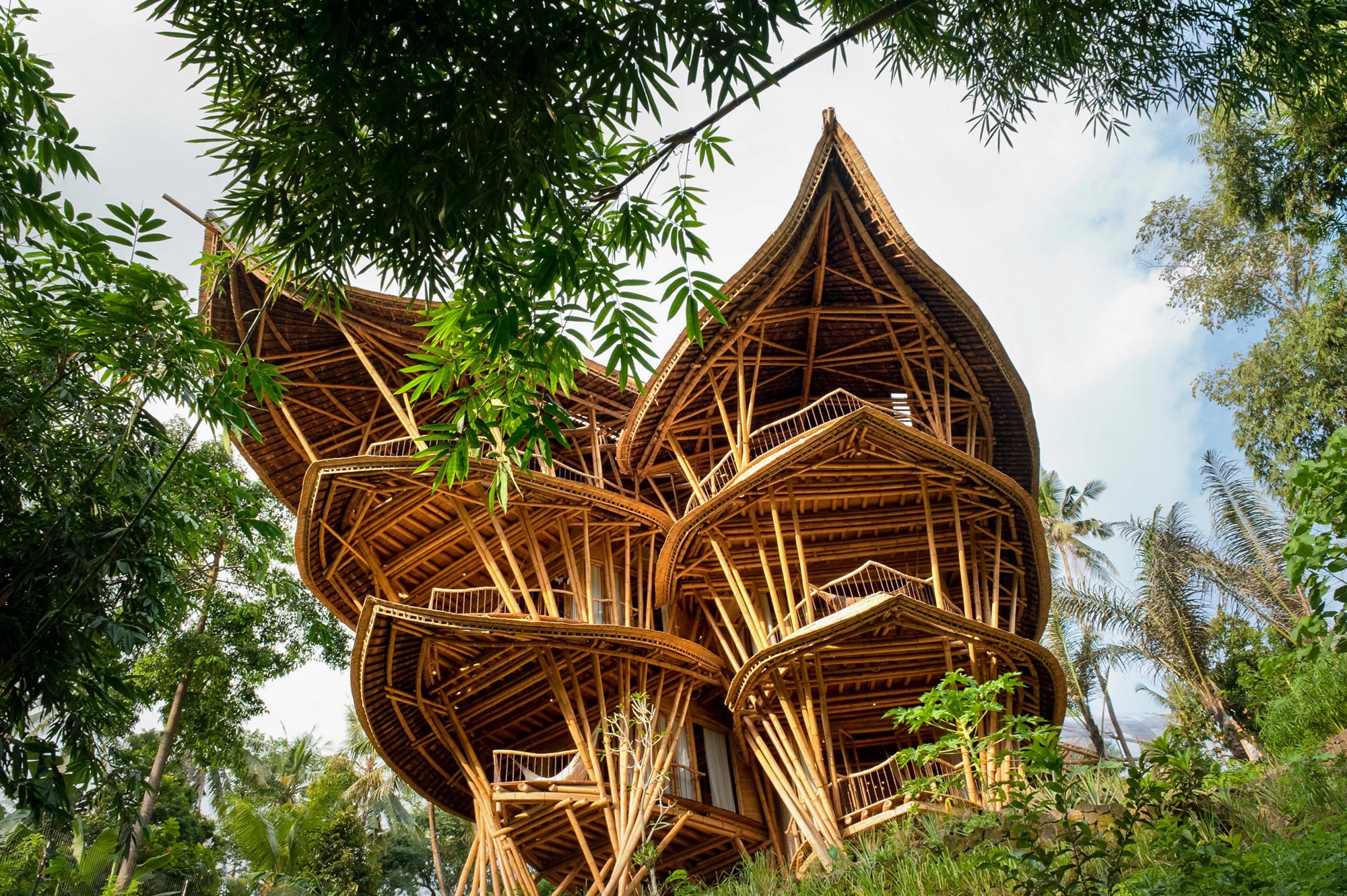
(Source: Quartz) Image of structure made of bamboo
2. Sheep’s Wool
Yes, you read that right. Sheep’s wool is a great construction material that is entirely natural, environmentally friendly and can be regrown quickly. It is an amazing home insulator, with fibres that form millions of tiny air pockets that trap air. Wool is usually incorporated into ceilings, walls or attics.
3. Hempcrete
Hempcrete is a concrete-like material, created from the fibres of hemp plants. Hemp plants are fast-growing and therefore a renewable resource. Hempcrete is strong and lightweight, reducing the amount of energy required to transport the blocks.
Hempcrete is fire resistant and has great thermal and acoustic insulation qualities. It is also the biggest sustainable material that is carbon negative, meaning it absorbs more carbon than it emits!
4. Recycled Plastic
We produce around 400 BILLION kilograms of plastic each year, with only 9% of it being properly recycled. But did you know that your roof, walls and floor can be made out of recycled bottles?
Imagine a world where you NEVER see waste and plastic washing up on the shore of your local beach. Yes, this is possible, if recycled plastics are used in construction over the world. Recycled plastics are a perfect building material – cheap to produce, readily available and easy to mould. They are durable, waterproof and insulating, and can be suitable for properties withstanding any climate.
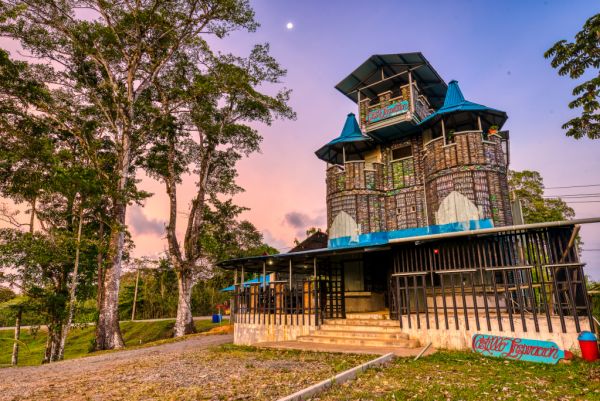
(Source: Domain) Image of Plastic Bottle Village: Structure made from 1 million recycled bottles
5. Cork
To you, its primary purpose may be a stopper for your fave red wine, but cork also serves as an outstanding sustainable structural material.
Harvested from trees, cork is extremely waterproof, with a weather-resistant quality that makes it incredibly durable. It is used in insulation panels, floor and wall tiles and even soundproofing, working as a natural insulator to regulate the temperature throughout the seasons.
Cork also has beautiful aesthetic qualities – giving buildings natural patterning, earthy tones and unique textural elements.

(Source: Arch Daily) Image of house made of cork
Conclusion
Plans for the innovative hybrid timer skyscraper in Perth have been submitted to the council for planning approval, with the building intended to commence next year.

